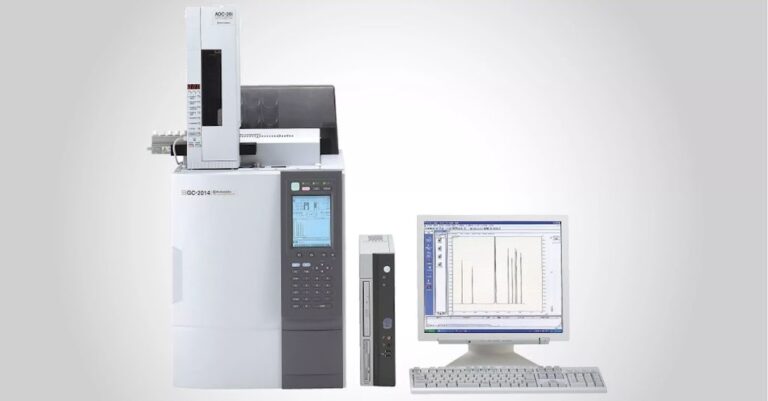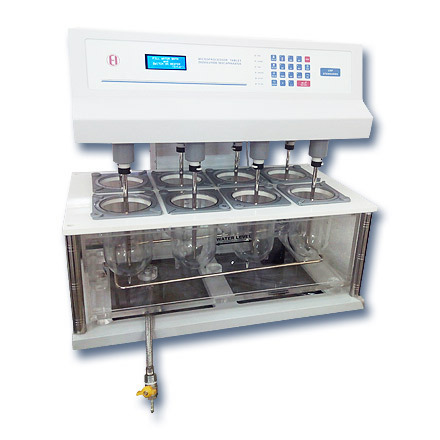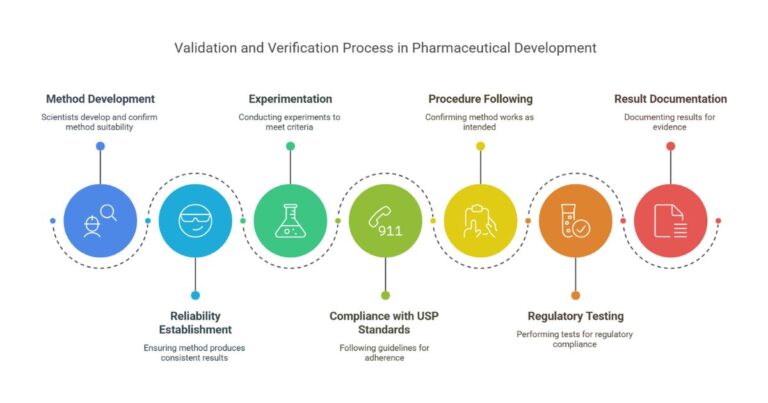High-Performance Liquid Chromatography (HPLC) remains one of the most indispensable analytical tools in modern pharmaceutical, chemical, and biotechnological laboratories. Whether you are quantifying impurities in a stability sample, profiling excipients in a dosage form, or characterizing biological macromolecules, the performance of your HPLC system ultimately hinges on a single component: the column.
The HPLC column is the heart of chromatographic separation. It defines selectivity, retention, resolution, peak shape, robustness, and method lifecycle. While pumps, injectors, detectors, and software matter, column selection makes or breaks the method.
By 2025, column technologies have become extraordinarily diverse—ranging from classical silica-based phases to hybrid materials, core-shell architectures, monoliths, chiral selectors, mixed-mode chemistries, HILIC phases, UHPLC-rated sub-2 µm packings, protein-specific stationary phases, and sophisticated affinity-based materials.
This definitive 2025 guide consolidates insights from leading scientific sources. It cuts through fragmented explanations found across the internet and presents a complete, authoritative, technically precise understanding of every major HPLC column type.
If your goal is to master HPLC column selection, troubleshoot efficiently, and adopt the most modern 2025-ready technologies—this guide delivers everything you need.
Fundamental Classification of HPLC Columns

HPLC columns are fundamentally classified based on:
1. Stationary Phase Chemistry
- Silica-based
- Polymer-based
- Hybrid organic–inorganic
- Core–shell composites
- Monoliths
2. Separation Mechanism
- Partitioning
- Adsorption
- Ion-exchange
- Size-exclusion
- Affinity
- Chiral recognition
- Mixed-mode
3. Chromatographic Mode
- Reverse Phase (RP-HPLC)
- Normal Phase (NP-HPLC)
- Ion-exchange Chromatography (IEX)
- Size-Exclusion Chromatography (SEC or GFC)
- Chiral Chromatography
- HILIC (Hydrophilic Interaction Liquid Chromatography)
- Affinity Chromatography
- Specialty and Mixed-mode Chromatography
This high-level system provides a logical foundation to understand the detailed column types discussed below.

In-Depth Column Types Analysis (2025)

1. Reverse Phase Columns
Principle
Reverse phase separation is based on hydrophobic interactions between nonpolar analytes and hydrophobic stationary phases. Polar mobile phases (water + organic modifiers like acetonitrile/methanol) elute analytes according to hydrophobicity.
Common Stationary Phases
- C18 (ODS) – most widely used
- C8 – shorter alkyl chain → less retention
- C4 – suitable for proteins, peptides
- Phenyl – π-π interactions, aromatic selectivity
- PFP (Pentafluorophenyl) – dipole, π-π, steric selectivity
- Cyano (CN) – moderately polar, dual-mode behavior
- Embedded-polar / polar-endcapped phases – enhanced reproducibility at low aqueous conditions
Particle Technologies
- Porous silica (1.7–10 µm)
- Sub-2 µm UHPLC particles
- Core–shell (fused core) particles
- Hybrid particles (silica + organic matrix)
Applications
- API assay and impurities
- Dissolution profiling
- Natural product analysis
- Peptide mapping
- Environmental contaminants
- Food additives
Recent Advancements
2024–2025 trends include:
- Extended pH-stability hybrid-silica phases (pH 1–12)
- Column chemistries designed for high-throughput LC-MS
- Polar-embedded RP phases for improved peak shape of basic drugs
- Core-shell technology for ultra-high efficiency at lower back pressure
Pros
- Most versatile
- Compatible with MS
- High reproducibility
- Wide application scope
Cons
- Not ideal for extremely polar analytes
- Silica phase sensitive at extreme pH
- Column collapse (“phase dewetting”) with high aqueous mobile phases (unless polar-embedded)
2. Normal Phase Columns
Principle
Normal phase separates analytes by adsorption onto polar stationary phases with nonpolar mobile phase (hexane, heptane, isopropanol modifiers).
Stationary Phases
- Bare silica
- Amino (NH₂)
- Diol
- Cyano (CN)
- Alumina (less common in modern HPLC)
Suitable For
- Isomer separations
- Lipids
- Highly hydrophobic natural products
- Separation of positional/structural isomers
Recent Trends
Normal phase usage has declined due to solvent toxicity and RP-HPLC dominance but remains essential in:
- SFC (supercritical fluid chromatography) precursor method development
- Complex geometrical isomer separations
Pros
- Exceptional selectivity for polar analytes
- Useful for chiral derivatization workflows
Cons
- Poor reproducibility due to moisture sensitivity
- Nonpolar solvents restrict MS use
- Not suitable for routine QC labs
3. Ion-Exchange Columns
Principle
Retention is based on electrostatic attraction between charged analytes and oppositely charged stationary phase groups.
Types
- Cation-exchange (for basic compounds)
- Sulfonic acid groups
- Carboxylic acid groups
- Anion-exchange (for acidic compounds)
- Quaternary ammonium groups
- Tertiary amines
Materials
- Silica-based
- Polymer-based (superior pH stability)
- Hybrid resins
Applications
- Amino acids
- Proteins
- Oligonucleotides
- Metal ions
- Ionic drug substances
Modern Innovations (2024–2025)
- Narrow-bore UHPLC IEX for biopharma
- Bio-inert ion-exchange phases
- High-capacity polymeric resins
Pros
- Extremely high selectivity for charged species
- Critical for biological macromolecule characterization
Cons
- Requires precise pH control
- Not MS-friendly in salt-intensive gradients
4. Size Exclusion Columns (SEC/GFC)
Principle
Separation based on molecular size in solution—not polarity or charge.
Analytes elute based on:
- Larger molecules → elute earlier
- Smaller molecules → diffuse inside pores → elute later
Stationary Phase
- Porous silica (for small molecules)
- Polymeric resins (for proteins and antibodies)
Applications
- Monoclonal antibodies
- Protein aggregates (HMWL)
- Polymer molecular weight distribution
- Oligonucleotide size profiling
Key Considerations
- No strong interactions should occur
- Mobile phase must ensure sample solubility and prevent adsorption
Pros
- Non-destructive
- Highly reproducible
Cons
- Limited resolution for similarly sized molecules
- Sensitive to shear forces in UHPLC systems
5. Chiral Columns
Principle
Chiral columns exploit stereochemical interactions to separate enantiomers.
Major Chiral Selector Classes
- Polysaccharide-based (amylose, cellulose derivatives) – most widely used
- Cyclodextrin-based
- Protein-based (e.g., α1-acid glycoprotein)
- Ligand-exchange (Cu²⁺ complexes)
- Pirkle-type brush phases
Applications
- Chiral purity of APIs
- Enantiomeric excess determination
- Regulatory compliance for chiral drugs
Recent Trends
- Immobilized polysaccharide phases for solvent flexibility
- UHPLC-optimized chiral columns
- HILIC-compatible chiral stationary phases
Pros
- High selectivity
- Broad applicability
Cons
- Expensive
- Method development can be challenging
6. Affinity and Specialty Columns
Principle
Highly specific biochemical interactions:
- Antibody-antigen
- Enzyme-substrate
- Metal affinity (IMAC)
- Molecular imprinting
Types
- Immunoaffinity columns
- Protein A/G columns (biopharma QC)
- Molecularly Imprinted Polymers (MIPs)
- Mixed-mode (ion-exchange + RP)
- Monolithic columns
Applications
- Biomarker purification
- Glycan profiling
- Phosphopeptide enrichment
- Histidine-tagged protein purification
Pros
- Unmatched selectivity
- Critical in proteomics and biopharma
Cons
- High cost
- Narrow analyte applicability
7. State-of-the-Art / Hybrid Stationary Phases (2025)
Key Technologies
1. Core–Shell (Fused-Core) Columns
- Solid core + porous shell
- Efficiency comparable to sub-2 µm at lower backpressure
2. Hybrid Organic–Inorganic Silica
- Broader pH stability
- Higher mechanical strength
3. HILIC Columns
- For highly polar analytes
- Stationary phases: bare silica, amide, zwitterionic
4. Monolithic Columns
- Continuous porous structure
- Ultra-fast separations
- Low backpressure
5. SFC-Specific Columns
- Modified silica
- Chiral SFC columns
These emerging column types dominate modern LC–MS workflows and high-throughput analysis.
Critical Comparison Table of All HPLC Column Types
| Column Type | Stationary Phase | Mechanism | Best For | Pros | Cons |
|---|---|---|---|---|---|
| Reverse Phase | C18, C8, phenyl, PFP | Hydrophobic partitioning | APIs, impurities, peptides | Most versatile, MS-friendly | Poor for very polar analytes |
| Normal Phase | Silica, amino, cyano | Adsorption | Isomers, lipids | Exceptional polar selectivity | Moisture-sensitive, less robust |
| Ion-Exchange | Sulfonic acid, quaternary amines | Electrostatic | Proteins, oligos, ions | High selectivity | Salt gradients → MS issues |
| Size-Exclusion (SEC) | Porous silica/polymer | Size exclusion | Proteins, polymers | Non-destructive | Limited resolving power |
| Chiral | Polysaccharide, cyclodextrin, proteins | Chiral recognition | Enantiomers | Unmatched stereoselectivity | Expensive |
| Affinity | Antibodies, ligands | Biochemical affinity | Biomolecules | Highly selective | Limited scope |
| Mixed-Mode | RP + IEX combos | Dual mechanism | Complex analytes | Versatile | Complex method development |
| HILIC | Silica, amide, ZIC | Hydrophilic partitioning | Polar drugs, metabolites | MS compatible | Sensitive to water % |
| Core–Shell | Fused-core | Enhanced mass transfer | High-throughput | High efficiency | Requires optimized system |
Selection Criteria and Troubleshooting
How to Choose the Right Column
1. Identify the Analyte Characteristics
- Polarity
- Charge
- Molecular size
- Functional groups
- Stability at pH extremes
2. Consider Analytical Goal
- Resolution?
- Speed?
- Sensitivity?
- Method lifecycle?
3. Match Separation Mechanism
- Hydrophobic analytes → RP
- Strongly polar → HILIC
- Charged → IEX
- Size differences → SEC
- Enantiomers → Chiral
4. pH Compatibility
Silica phases degrade above pH 8; hybrid or polymeric phases tolerate pH 1–12.
5. Particle Size
- 5 µm – QC robustness
- 3 µm – improved efficiency
- 1.7–2 µm – UHPLC high resolution
- Core–shell 2.6 µm – balance of resolution and pressure
6. Matrix Compatibility
Biological samples → bio-inert columns
High-salt buffers → polymeric phases
Common Mistakes
1. Using 100% Aqueous Mobile Phase on Hydrophobic C18
Issue: Phase collapse
Fix: Use polar-embedded or aqueous-stable C18.
2. Poor Peak Shape for Basic Drugs
Cause: Silanol interactions
Fix: Use endcapped or polar-embedded phases; increase buffer strength.
3. Loss of Retention in HILIC
Cause: Too much water
Fix: Increase acetonitrile; re-equilibrate longer.
4. Deterioration of SEC Separation
Cause: Adsorption to packing
Fix: Tune ionic strength; add compatible salts.
5. Drifting Retention in Normal Phase
Cause: Moisture absorption
Fix: Dry solvents; purge system; maintain stable humidity.
Column Longevity Tips (Evidence-Based)
- Always filter samples (0.22 µm) and mobile phases.
- Use guard columns for dirty matrices.
- Avoid pH extremes beyond column limits.
- Never store columns in buffer; flush with organic solvent before storage.
- Equilibrate sufficiently—especially in HILIC and IEX methods.
- Avoid abrupt solvent changes.
- Maintain stable temperature for reproducible retention.
Latest Innovations (2024–2025)
1. Ultra-High-Pressure Columns (UPLC-level)
- Sub-1.5 µm hybrid particles
- Operable at 1500+ bar
- Used in peptide mapping and impurity profiling
2. Core–Shell 2.0 Technology
- Thinner porous layers
- Lower eddy dispersion
- Faster separations at lower backpressure
3. Bio-inert HPLC Columns
- Titanium hardware
- PEEK-lined flow paths
- Eliminates metal interactions for oligos, phosphopeptides
4. Monolithic Column Evolution
- Improved polymer monoliths
- Exceptional speed for high-throughput screening
5. HILIC Phases for Metabolomics
- Zwitterionic phases optimized for LC–MS
- High retention for extremely polar metabolites
6. Mixed-Mode with Tunable Selectivity
- RP + IEX combinations with adjustable mobile phase ion strength
- Useful in impurity profiling of complex small molecules
7. Eco-friendly HPLC Columns
- Optimized for ethanol/water mobile phases
- Reduced carbon footprint
Frequently Asked Questions
How do I distinguish between RP and HILIC columns?
RP columns are hydrophobic (C18, C8, phenyl).
HILIC columns are hydrophilic (silica, amide, zwitterionic).
Which column is best for basic analytes?
Polar-embedded C18
Endcapped C18
Hybrid-silica RP phases
These minimize silanol interactions → sharper peaks.
What column should I use for highly polar or ionic drugs?
HILIC
Ion-exchange
Mixed-mode RP/IEX
How do I extend column lifespan?
Avoid extreme pH
Use guard columns
Flush buffers before storage
Ensure proper equilibration
Why does retention drift over time?
Column contamination
Mobile phase degradation
Temperature fluctuations
Loss of bonded phase
Conclusion
Understanding the types of HPLC columns is not an academic exercise—it is a critical skill that directly affects analytical accuracy, regulatory compliance, product quality, and laboratory efficiency. In 2025, advancements such as hybrid materials, fused-core technology, high-pressure UHPLC packings, bio-inert hardware, and HILIC/metabolomics phases have expanded the analytical toolkit available to chemists.
By mastering column selection principles, troubleshooting techniques, and modern innovations, scientists can:
- Improve resolution
- Reduce run times
- Enhance robustness
- Extend column life
- Achieve high MS compatibility
- Meet strict regulatory requirements
Whether you are developing a new method, troubleshooting a difficult separation, or upgrading to UHPLC performance, the right column—chosen with scientific logic—drives everything.
References:
- Agilent Technologies. HPLC Column Selection Guide: Choosing the Right Column for Your Separation.
- LCGC North America. The Latest HPLC Column Trends for 2025. (Key source for current technology and market trends).
- Waters Corporation. Principles of Reverse Phase and HILIC Chromatography.
- Phenomenex. Chiral Chromatography Stationary Phases and Applications.
- Thermo Fisher Scientific. Ion Exchange and Size Exclusion Chromatography for Bioseparations.
- Restek. Troubleshooting and Lifetime Extension of HPLC Columns.
- Sigma-Aldrich/Merck. Technical Documentation: UHPLC and Core-Shell Particle Technology.
- ScienceDirect. Advances in Monolithic Columns and Molecularly Imprinted Polymers (MIPs) in HPLC.
- Hawach Scientific. Classification and Fundamentals of Normal Phase Chromatography.
- Nature Methods. Chromatography in the Biopharmaceutical Industry: Protein Characterization.




